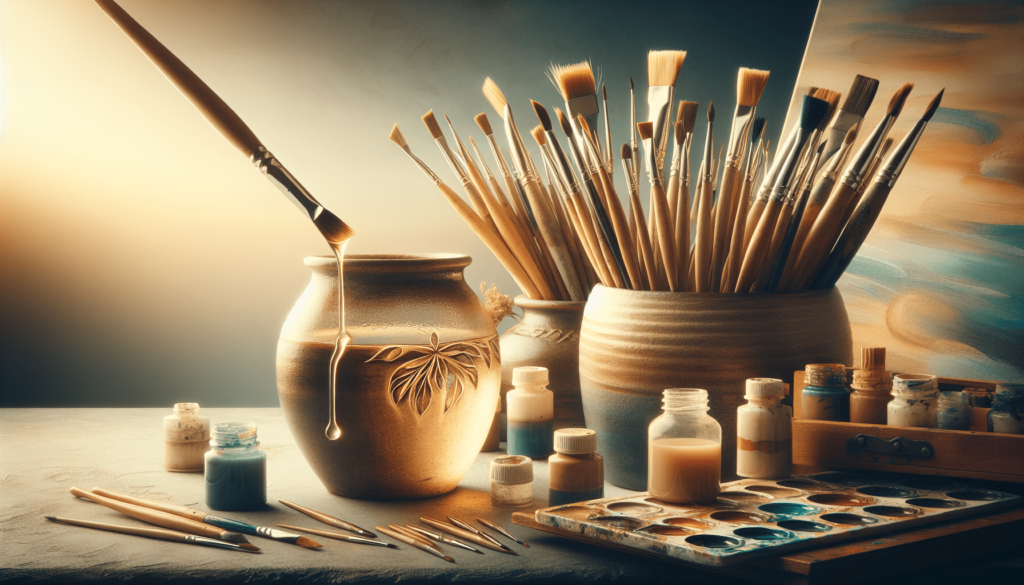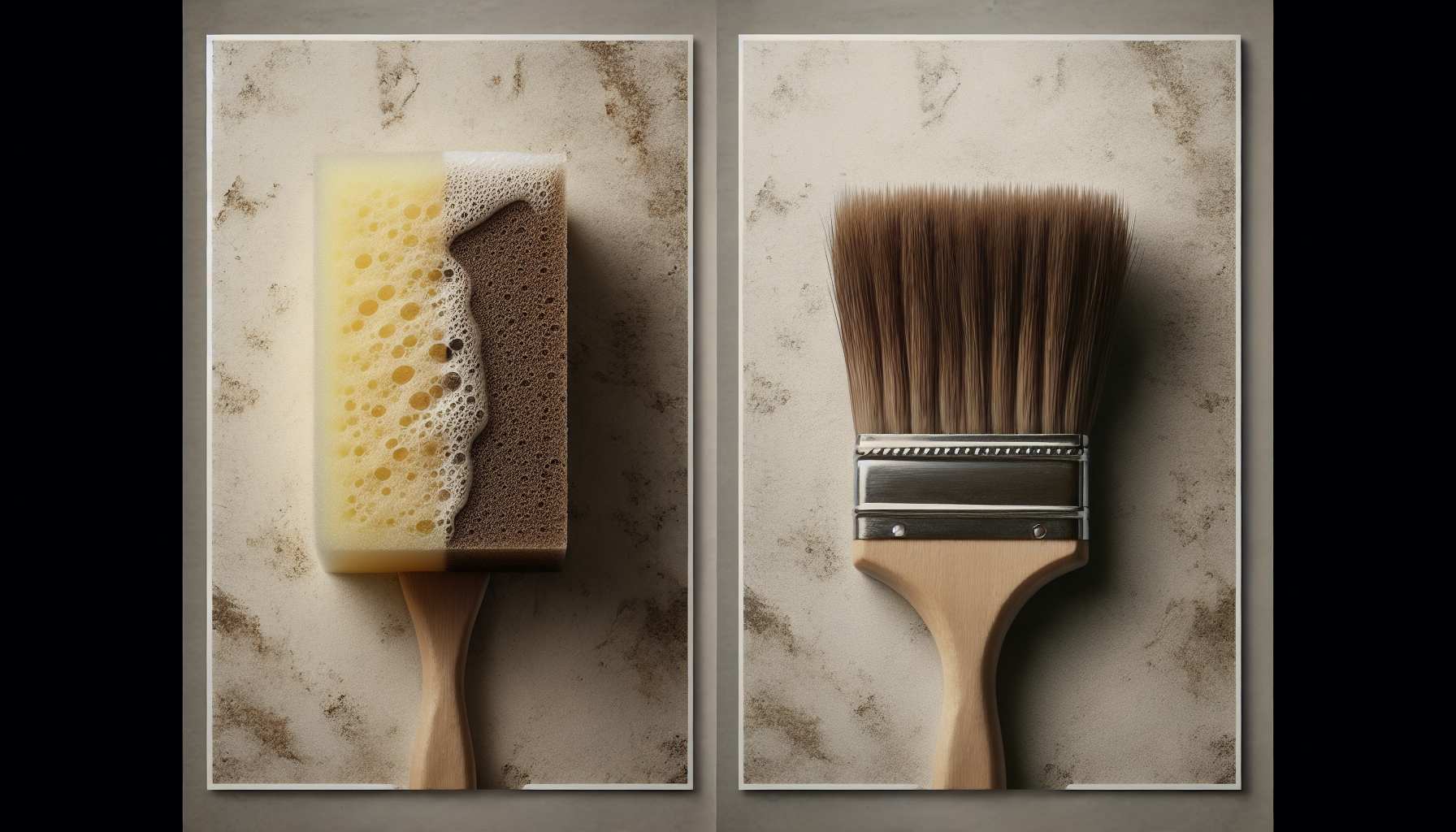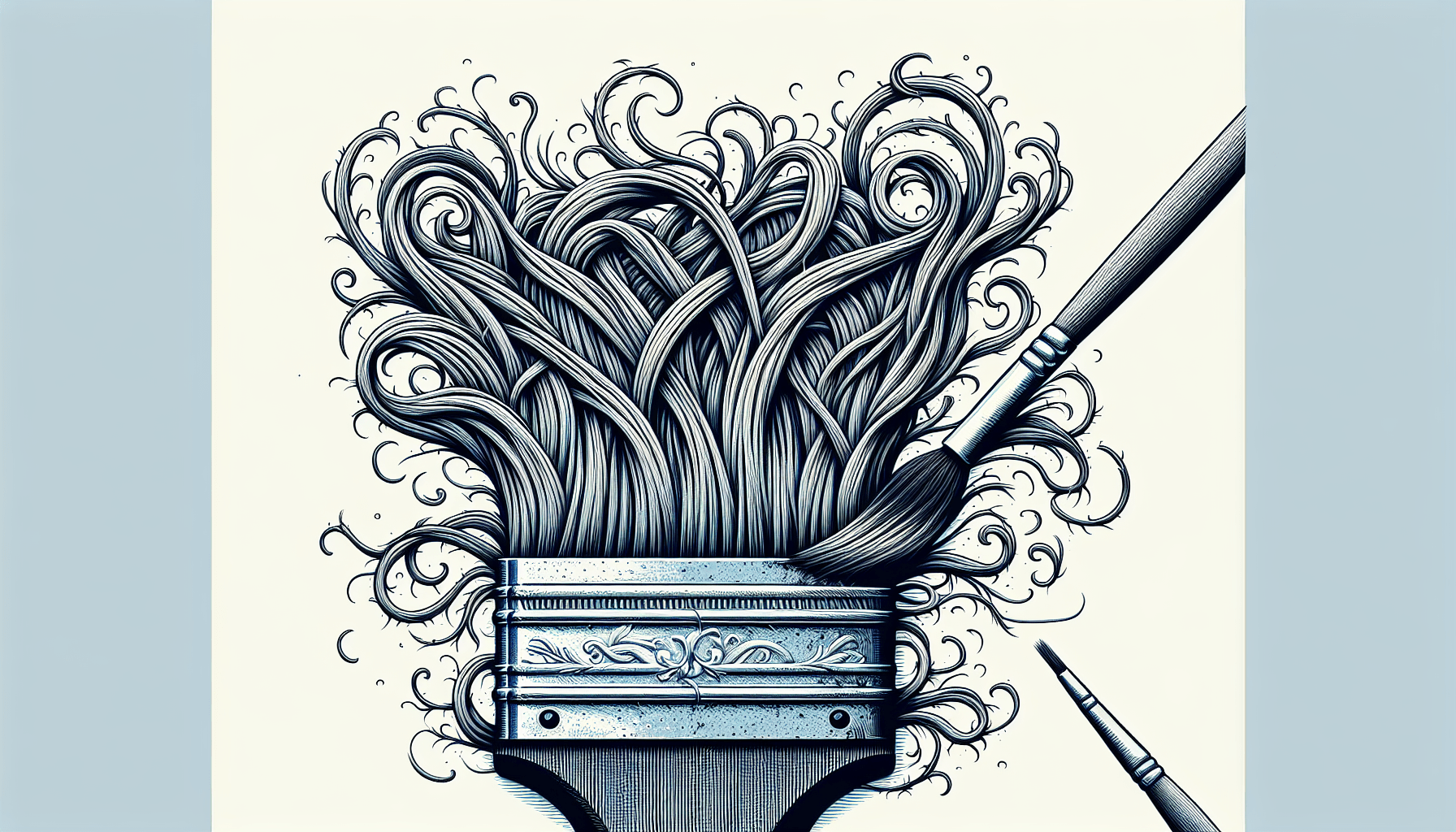Using a damp paint brush may seem like an unorthodox approach when it comes to painting, but it can actually yield surprising results. Many professional painters and DIY enthusiasts have discovered the benefits of using a slightly moistened paint brush for certain projects. This article will explore the advantages of utilizing a damp brush, including how it can improve paint application, prevent streaks, and provide a smoother finish. Whether you are a seasoned painter or just starting out, understanding when and how to use a damp paint brush can elevate the quality of your work and save you precious time.

Benefits of Using a Damp Paint Brush
Enhanced Paint Flow
One of the key benefits of using a damp paint brush is the enhanced paint flow it provides. When the bristles of a paint brush are slightly damp, they become more pliable and can hold more paint. This allows the paint to flow smoothly onto the surface, resulting in a more even and consistent application.
Reduced Brush Strokes
Using a damp paint brush can also help reduce the visibility of brush strokes on the painted surface. The moisture in the brush helps to soften the bristles, allowing them to glide more smoothly over the surface. This can result in a smoother finish with fewer visible brush marks, giving your paint job a more professional and polished look.
Better Coverage
When you use a damp paint brush, the moisture in the bristles helps the paint to spread more effectively on the surface. This can lead to better coverage and a more even distribution of paint, ensuring that you achieve the desired color and finish with fewer coats.
Less Paint Waste
Using a damp paint brush can help minimize paint waste. The moisture in the brush helps to prevent the paint from drying too quickly, allowing you to work with the paint for a longer period of time. This means that you can cover a larger area before needing to reload the brush with paint, resulting in less paint being wasted.
Choosing the Right Paint Brush
Consider the Brush Type
When choosing a paint brush, it is important to consider the type of brush that will work best for your specific painting project. Different brush types have different characteristics and are better suited for different types of paint and surfaces. For example, a flat brush is ideal for large, flat surfaces, while an angled brush is more suitable for cutting in and painting corners and edges.
Check the Bristle Material
The bristle material of a paint brush also plays a crucial role in determining its performance. Natural bristle brushes are typically made from animal hair and are best suited for oil-based paints. Synthetic bristle brushes, on the other hand, are made from nylon or polyester and are better suited for water-based paints. It is important to choose a brush with bristles that are compatible with the type of paint you will be using.
Determine the Brush Size
Brush size is another important factor to consider. The size of the brush should be chosen based on the size of the area you will be painting. A larger brush will cover a larger surface area more quickly, while a smaller brush will allow for more precise and detailed work. It is a good idea to have a range of brush sizes on hand to accommodate different areas and tasks.
Preparing the Paint Brush
Wet the Brush Bristles
To prepare a paint brush for use, it is recommended to wet the brush bristles. This can be done by dipping the brush in water and allowing the bristles to absorb some moisture. Wetting the bristles helps to condition the brush and improve its flexibility, making it easier to work with.
Remove Excess Water
After wetting the brush bristles, it is important to remove any excess water. This can be done by gently tapping or shaking the brush to remove the excess moisture. It is important to ensure that the brush is damp, but not dripping wet, as excessive water can dilute the paint and affect the paint application.
Pat Dry with a Cloth
To further remove any excess water and ensure the brush is at the desired level of dampness, it can be helpful to gently pat dry the bristles with a clean cloth or paper towel. This step helps to achieve the ideal level of moisture in the brush before beginning to paint.
Using a Damp Paint Brush
Test the Paint Flow
Before starting to paint, it is advisable to test the paint flow on a scrap piece of material or an inconspicuous area. This allows you to gauge the consistency and coverage of the paint before applying it to the entire surface. Adjustments can be made to the dampness of the brush or the thickness of the paint to achieve the desired results.
Apply Paint in Thin Layers
When using a damp paint brush, it is generally best to apply the paint in thin, even layers. Building up the layers gradually helps to achieve better coverage and reduces the risk of visible brush strokes. It is important to let each layer dry completely before adding the next one to ensure a smooth and professional finish.
Blend and Feather Edges
To create a seamless and professional look, it is important to blend and feather the edges of the painted area. This can be done by lightly brushing over the edges with a slightly damp brush to soften the transition between painted and unpainted areas. This technique helps to create a more natural and cohesive appearance.
Minimize Brush Marks
To minimize the appearance of brush marks, it is important to use long, smooth strokes and avoid applying excessive pressure. The dampness of the brush will help to reduce the visibility of brush strokes, but proper technique and a steady hand are still important factors in achieving a flawless finish.

Cleaning and Maintaining a Damp Paint Brush
Rinse with Warm Water
After painting, it is important to thoroughly rinse the damp paint brush with warm water to remove any remaining paint. This helps to prevent the paint from drying and hardening on the bristles, which could damage the brush and affect its performance in future painting projects.
Use Mild Soap or Dishwashing Liquid
In addition to rinsing with warm water, it can be beneficial to clean the damp paint brush with mild soap or dishwashing liquid. This helps to remove any residual paint and ensures that the brush is clean and ready for future use. Gently lather the bristles with soap and rinse thoroughly with warm water until all traces of paint are gone.
Gently Comb the Bristles
To maintain the shape and integrity of the brush bristles, it is advisable to gently comb them after cleaning. This can be done by using a specialized brush comb or simply running your fingers through the bristles to remove any tangles or clumps. This step helps to keep the bristles in optimal condition for future use.
Store the Brush Properly
To prolong the life of a damp paint brush, it is important to store it properly. After cleaning and combing the bristles, shake off any excess water and allow the brush to air dry completely. Once dry, store the brush in a clean and dry place, ensuring that the bristles are protected and not bent or crushed. This helps to maintain the shape and quality of the brush for future painting projects.
Painting Tips and Tricks
Keep a Damp Cloth Nearby
Having a damp cloth or sponge nearby while painting can be incredibly useful. This allows you to quickly and easily wipe away any mistakes, drips, or excess paint, ensuring a cleaner and more precise paint job. Additionally, a damp cloth can be used to keep the paint brush damp if it starts to dry out during use.
Work in Small Sections
When using a damp paint brush, it is often more effective to work in small, manageable sections. This allows you to maintain control over the paint application and ensure that the paint is evenly distributed. Working in small sections also helps to prevent the paint from drying before you have a chance to blend and feather the edges.
Use a Fan or Humidifier to Control Drying Time
To control the drying time of the paint, especially in areas with low humidity or high temperatures, it can be helpful to use a fan or humidifier. Increasing the airflow or adding moisture to the environment can slow down the drying process, giving you more time to work with the paint and achieve the desired finish.
Experiment and Practice
Using a damp paint brush is a technique that requires practice and experimentation. The level of dampness, the paint consistency, and the painting technique can all vary depending on the project and personal preferences. It is important to experiment with different methods and practice to find the approach that yields the best results for you.
Common Mistakes to Avoid
Using an Oversaturated Brush
One common mistake when using a damp paint brush is saturating the brush with too much water. This can result in excessive moisture in the bristles, leading to diluted paint and an uneven application. It is important to find the right balance of dampness that allows for better paint flow without oversaturating the brush.
Allowing Paint to Dry on the Brush
Another mistake to avoid is allowing the paint to dry on the brush bristles. If the paint dries on the bristles, it can harden and affect the performance of the brush in future painting projects. It is essential to clean the brush thoroughly and remove all traces of paint before storing it.
Applying Too Much Pressure
Applying too much pressure when using a damp paint brush can lead to visible brush strokes and an uneven application of paint. It is important to use a light touch and let the brush and the dampness of the bristles do the work. Allow the paint to flow naturally and avoid pressing the brush down too firmly on the surface.
Neglecting Brush Techniques
Using a damp paint brush does not negate the importance of proper brush techniques. It is still important to use consistent strokes, maintain a steady hand, and follow the natural grain or pattern of the surface being painted. Neglecting proper brush techniques can result in an amateurish finish, regardless of the dampness of the brush.
Safety Precautions
Work in a Well-Ventilated Area
When painting with any type of paint, it is important to work in a well-ventilated area. This helps to minimize exposure to potentially harmful fumes and ensures proper air circulation. Open windows and doors, or use exhaust fans, to allow for adequate ventilation while painting.
Avoid Ingesting or Inhaling Paint
It is crucial to avoid ingesting or inhaling paint, as it can be toxic. Always paint in a well-ventilated area and take breaks if necessary to avoid prolonged exposure to paint fumes. Additionally, it is important to avoid eating, drinking, or smoking while painting to prevent accidental ingestion of paint particles.
Protect Your Skin and Eyes
When using a damp paint brush, it is important to protect your skin and eyes. Paint can cause skin irritation and is harmful if it comes into contact with the eyes. Wear protective gloves, long sleeves, and goggles or safety glasses to shield yourself from potential paint splatters or accidents. In case of contact with the paint, immediately rinse the affected area with water.
Conclusion
Using a damp paint brush can offer several benefits, including enhanced paint flow, reduced brush strokes, better coverage, and less paint waste. To make the most of these benefits, it is important to choose the right paint brush, prepare it properly, and use proper techniques while painting. Cleaning and maintaining a damp paint brush is also critical to ensure its longevity and optimal performance. By following these guidelines and taking appropriate safety precautions, you can improve your painting results and achieve a professional finish. Remember, practice and experimentation are key to mastering the art of using a damp paint brush.



